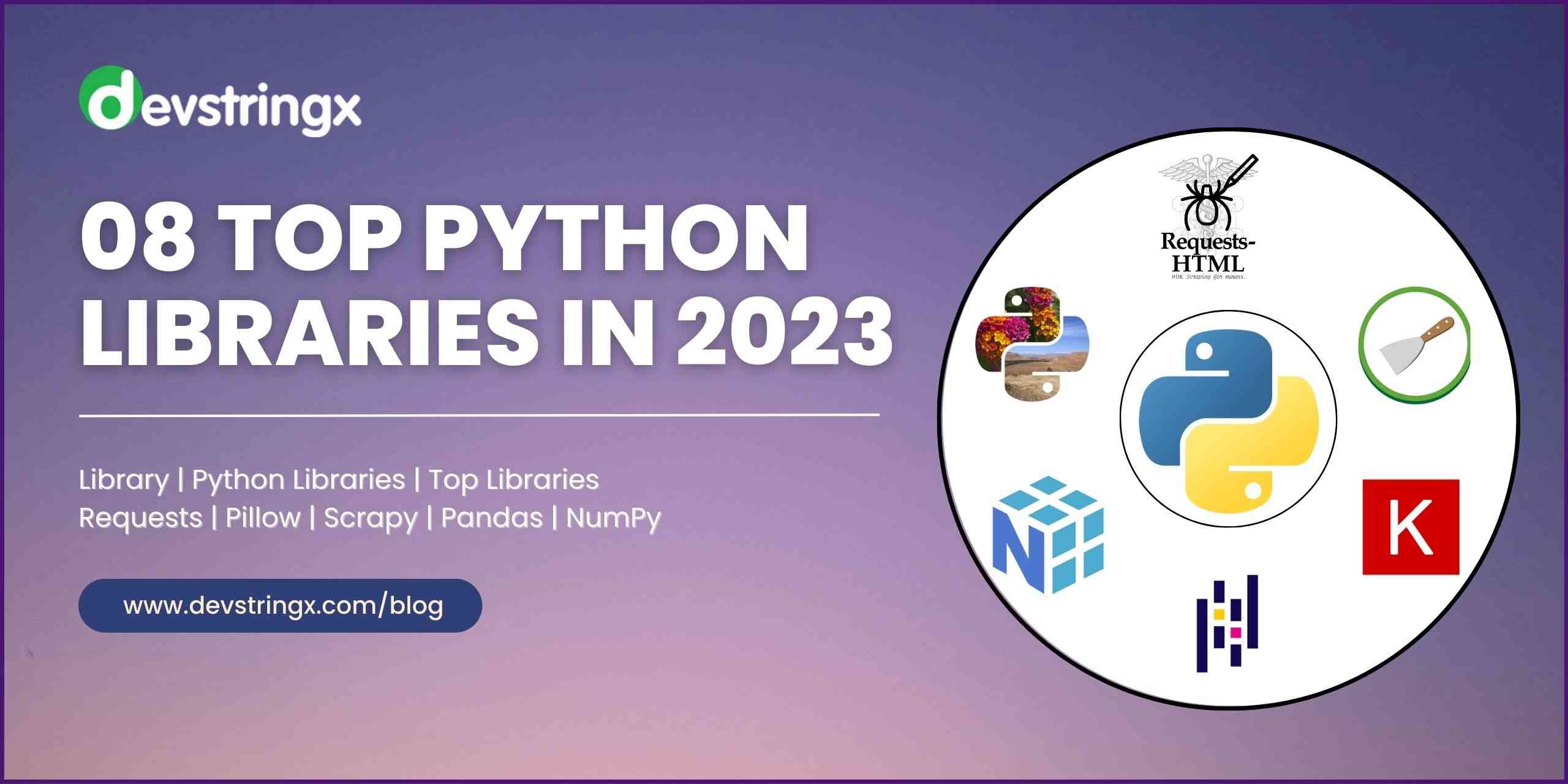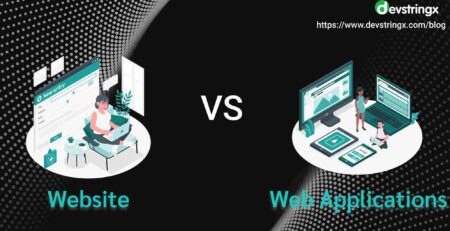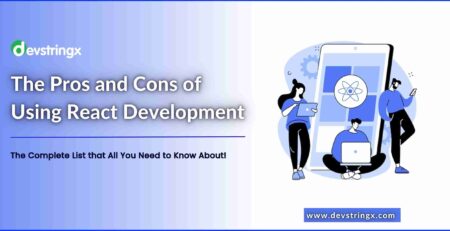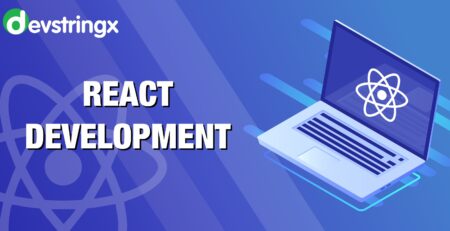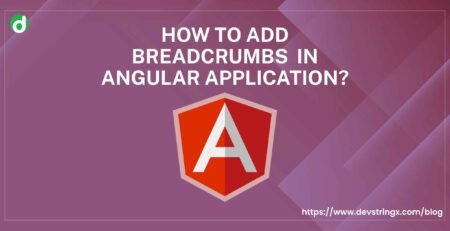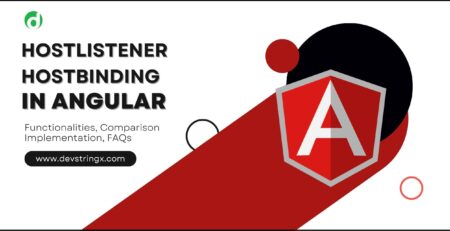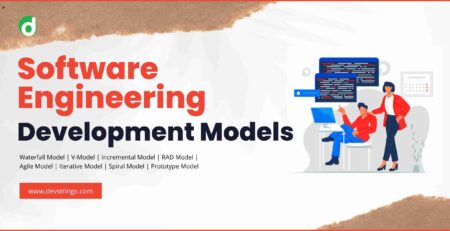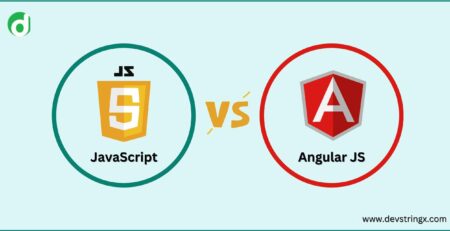Top 08 Python Libraries As Per Experts Review – 2024 | Devstringx
Python is a versatile programming language that can use for a variety of applications from simple scripts to complex data science projects. With the ever-increasing range of tasks and problems python can handle, it’s only natural to have an accompanying array of powerful libraries available. From plotting and visualization to machine learning and web development, there are plenty of python libraries out there specifically designed to help you get the most out of your coding efforts. In this blog post, we’ll cover some essential examples that should form part of any programmer’s library collection for tackling various projects quickly and effectively. So let’s dive in!
What Is A Library?
Libraries provide a powerful resource to developers, allowing them to perform complex tasks with much less effort. Instead of writing code from scratch for every task, coders can use libraries as a library of functions and classes that are already written and tested; saving time while still providing optimized outcomes. By taking advantage of code reusability through the implementation of pre-existing packages or modules within their applications, builders don’t have any need to create extra components necessary for routine problems – unlocking efficiency gains throughout projects large and small.
What Are Python Libraries?
Let us first know What Python is? Python might just be the lizard that lets you code your way to success! As one of the most popular coding languages on the market, Python widely uses for software development, web development, data science, and more. This coding powerhouse creates by Guido van Rossum in 1991, and since then it has been embraced by developers of all kinds around the globe. With its robust structure and user-friendly syntax, Python provides an easy entry point into coding that professionals and hobbyists alike enjoy. So don’t be surprised if someday soon you see a python coiled up in an office chair — that’s just software engineering as usual!
With over 137,000 libraries available, Python gives us almost unlimited possibilities for creating applications across various disciplines. From data science and machine learning to image manipulation and data visualization – we can take advantage of the library’s collection of helpful functions without needing to build everything from the ground up!
We have mentioned 08 top Python Libraries
1) Requests
Requests are the go-to choice for programmers wanting to make their work with HTTP easier. It’s open source and written in Python, making it accessible and user-friendly so developers can focus on what matters: coding!
The Requests library simplifies the process of sending HTTP requests – developers can easily add headers, form data, content, and more in an intuitive manner without having to manually append queries or encode POST data. This makes requesting from servers easy and straightforward!
2) Pillow
With the Python Imaging Library, or PIL, creating and modifying images is a breeze! It adds powerful image-processing capabilities to any Python interpreter. Developed by Alex Clark and other contributors with an emphasis on user experience in mind, Pillow has become the de facto tool for manipulating all sorts of graphics – from simple edits to complex projects.
Pillow is a versatile Python library offering top-notch image processing capabilities, efficient storage solutions, and extensive support for different file formats. Its core features promise fast manipulation of data while retaining its original pixel format.
Recommended to Read- Read Data From Excel Using Python in Robot Framework
3) Scrapy
Don’t get caught in the web of data gathering! Scrapy is here to help. This free and open-source Python framework can easily handle everything from web scraping to automated testing, so you’ll never have to worry about getting lost in a sea of information again.
Scrapy has come a long way since its creation as an exclusive web scraping tool. Now, it provides users with a fast and efficient approach to collecting structured data from websites – saving time while keeping results organized!
4) Pandas
Pandas, beloved among data scientists for its ease of use and Berkeley Software Distribution license, is the go-to library for efficient data analysis. This popular tool can help you manipulate and model your information quickly without having to switch languages – an especially attractive feature when considering Python’s vast array of uses such as lists, dictionaries, or strings!
5) NumPy
NumPy is the go-to library for Python users seeking to crunch numbers. It offers a wide array of built-in mathematical functions and can handle large matrices with ease. Making it an invaluable asset in scientific computation. Furthermore, NumPy Array has become increasingly popular for its memory efficiency and convenience. These both things make it more attractive than traditional lists when dealing with multidimensional data structures.
From trigonometric operations such as arcsine or tangent to random number generation. If you need powerful numerical functionality at light speed then give ‘Numerical Python’ (a fancy name given by creators) Numpy a try!
Recommended to Read- Selenium With Python for Beginner | Learn Pytest
6) Keras
Keras is revolutionizing the world of deep learning, allowing users to rapidly experiment with powerful neural networks. With a user-friendly API developed specifically for humans rather than machines and higher adoption rates in the industry. Research settings compared to other popular alternatives such as TensorFlow or Theano, it’s no wonder Keras has become so widely used – but don’t forget you’ll need that special engine before using this cutting-edge library!
7) TensorFlow
Created by Google Brain researchers, TensorFlow is a powerful open-source library for numerical calculation that’s revolutionizing the way researchers in machine learning and deep algorithms approach complex computational tasks. Leveraging techniques like XLA (Accelerated Linear Algebra) to maintain high speeds even as it performs linear algebra computations – quickly and consistently outperforming other libraries.
With its immense power already widely utilized across math, physics, and ML fields alike – there’s no telling what amazing things are yet to come from TensorFlow!
Recommended to Read- Top Backend Technologies
8) Eli5
Machine learning models can be unreliable and difficult to debug, but Eli5 is here to help! A Python library that works with a variety of machine learning libraries – XGBoost, lightning, sci-kit-learn, sklearn_crfsuite. This comprehensive tool practices visualization and debugging techniques so you can properly track all the inner workings of your algorithms. Put an end to inaccurate predictions once and for all!
Let’s Build Your Python Project – Get a Free Quote and Hire Your Python Developer Now!

